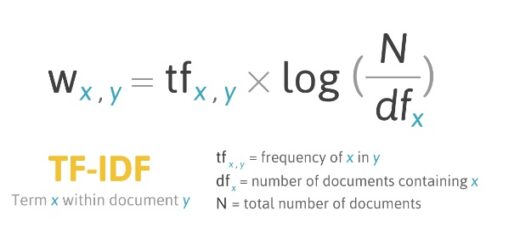Bing vs Bard: Battle of the AI
Battle of the AI, The winter of Artificial Intelligence is upon us as we, unintentionally or intentionally, expose our search findings to the whims of Microsoft’s Bing and Google’s Bard.
Initially introduced as limited previews in the spring season of 2023, both Bing and Bard have now transformed from mere fledglings to fully developed, automated chatbots.
It is estimated that 76% of current businesses, especially those directly related to the tech and IT sector, are steering their budgets toward AI and machine learning systems. And why not? ChatGPT’s advent took the world by storm. An AI that needs little introduction given its global presence in and around the digital marketspace.
But where ChatGPT intimidated many businesses, stunting their growth or forecasting their eventual demise, Microsoft and Google stepped up to the challenge to bring their warriors into the apparent foray.
Battle of the AI
How did both these AIs rise from the ashes and become indomitable in their own right? Let’s dig in!
Trained by the Best
Google has remained quite tight-lipped with sourcing how exactly they got Bard to come up with such expansive search results.
The general news is that the AI-powered chatbot sets up its foundations using the Large Language Model, LaMDA.
Even though the Silicon Valley giant was accused of pumping Bard full of data taken from OpenAI’s ChatGPT, Google has since called the allegations baseless. Then again, you wouldn’t expect a company that enjoys a strong, integrated presence all over the world to stoop so low.
Microsoft’s Bing, on the other hand, hasn’t been so conservative with its origin story. Using GPT-4 technology, the latest generative AI model provided generously by OpenAI, Bing AI’s chatbot optimizes itself with data pulled directly from the internet.
Considering how OpenAI owes its existence to the funding provided by Microsoft, among others, it is only natural that they return the favor in spades.
Extra Search Value
Since it’s a product by Google, Bard can be extensively patched up with third-party platforms such as websites and applications- particularly messaging platforms. Additionally, Bard converses in an engaging human-like tone that is not only adhered toward providing answers but also toward holding an independent conversation.
Bing is more like an attachment to the already existing Microsoft search engine. For example, you could search for, “top EV car manufacturers” and the website would behold traditional search results.
Stuff like vehicle brands, their locations, and images will be displayed in supple quantity. However, once you switch to specifics like, “top electric vehicles that have a minimum of 370-mile range and dual-zone climate control” that’s when Bing kicks up as an input field on the side of the screen.
The Chatbot can then provide detail-oriented specifics in addition to the ones already asked of, complete with images and links to external websites.
Real-Time Information
Google’s Bard works as a real-time agent dedicated to providing the latest search results and those too in chronological order.
Extracting search results directly from Google and its immense library of data is a daunting task handled expertly by Bard. Even though a worthwhile result is promised, the time taken to get there may be prolonged if you don’t have a robust internet connection.
Consider investing in an internet that will help your favorite Chatbot work its magic swiftly. Spectrum provides blazing-fast speeds coupled with affordable deals to get your searches pop up in a jiffy. Give Spectrum Customer Service a quick holler to get access to their bag of goodies.
This doesn’t apply just to Bard, even Bing AI draws its main grey-matter-power directly from search results so it only makes sense to get the latter hooked up with the same. Your third-party applications will thank you for it and so will your patience.
Maximum Search Variables
In a sly move to one-up Bard, Microsoft Bing came up with its very own, very original Bing Image Creator. By augmenting the capabilities of OpenAI’s DALL-E, users can prompt Bing’s AI Chatbot to get custom images relevant to their search results.
All this may seem simple in writing but consider an AI that can not only spew forth articulately written material but also embellish it with images and art that is 100% genuine. Boom.
Bard doesn’t particularly have much to offer to combat image creation but where it may fall short of one aspect, it offers a bunch of others:
- Translational Capability
Google offers translation services, and Bard uses the same data to translate over 100 languages into conversational content that can be generated in the form of comments, questions, points, and lists at a whims notice.
- Voice Command Compatibility
Bard works wonders even with voice commands. Not in the mood to type it out? Just tap the microphone at the right-hand side of the search bar and talk your heart out to Bard. Because Bard listens…and explains.
- User Friendliness
Google is a maestro in being easy on the eyes. Ever since the days of the Material UI, Google has taken it as their noble duty to conjure products that look aesthetic, work well with users and keep them engaged. The epitome of this vision is Bard. With its friendly user interface, Bard makes sure to keep you coming back for more.
Conclusion
That’s a wrap on our esteemed AI chatbots and their extraordinarily well-done facets. Both Bard and Bing present an astronomical amount of opportunity in the digital space. One that entails productivity, accessibility, and ease on a whole new level. Parent companies for both these AIs are hard at work to bolster their functions even further. It remains to be seen when B & B are going to be reaching a plateau as far as their capabilities go but for now, feel free to bask in their digital awesomeness.
Author: Ahmad Jahangheer


